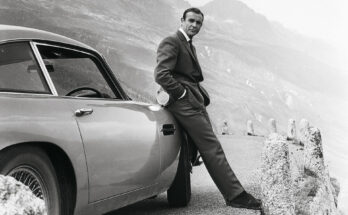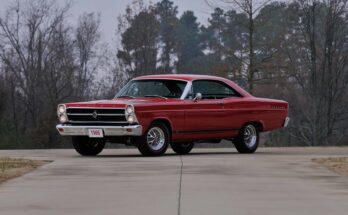The 1972 Lincoln Continental Presidential Limousine, used by President Ronald Reagan, is a significant artifact in American history, embodying both luxury and heightened security measures prompted by the evolving threats to U.S. presidents. This vehicle, often referred to by its Secret Service code name “200-X,” was a modified 22-foot, 13,000-pound six-passenger limousine delivered to the White House in 1974 by the Ford Motor Company’s Special Vehicles Engineering Department. Unlike earlier presidential vehicles, which were often retrofitted for protection, this limousine was designed from the outset for maximum security, reflecting a shift in priorities following the assassination of President John F. Kennedy in 1963.
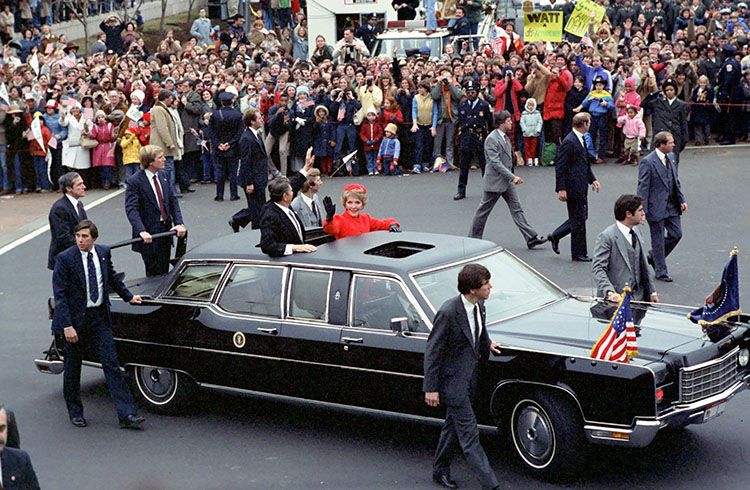
Design and FeaturesThe 1972 Lincoln Continental was powered by a 460-cubic-inch (7.5 L) V8 engine producing 214 horsepower, a robust choice for its hefty 13,000-pound frame, which was armored with full plate and bulletproof glass supplied by PPG Industries. The vehicle featured advanced security measures for its time, including:
- External microphones to allow occupants to hear outside noises, enhancing situational awareness.
- Bulletproof glass and full armor plating to protect against ballistic threats.
- Racks for Secret Service submachine guns, ensuring rapid response capabilities.
- A sunroof panel, one of the last presidential limousines to include roof openings, allowing the president to stand and wave during public appearances, though this feature was used cautiously due to security concerns.
The limousine was leased from Ford Motor Company for $5,000 annually (equivalent to approximately $31,879 in 2024), a cost-effective arrangement for a vehicle that required significant engineering and customization. It was typically transported by a Lockheed C-141 Starlifter cargo plane, reflecting the logistical demands of presidential travel.
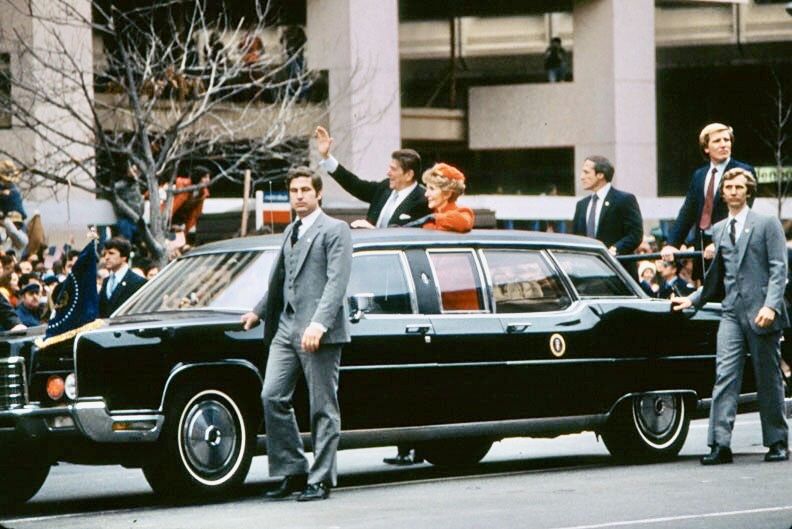
Historical Significance
The 1972 Lincoln Continental served five U.S. presidents—Richard Nixon, Gerald Ford, Jimmy Carter, Ronald Reagan, and George H.W. Bush—making it one of the longest-serving presidential limousines, in use until 19992. Its most notable moment came on March 30, 1981, during the attempted assassination of President Ronald Reagan by John Hinckley Jr. outside the Washington Hilton Hotel. As Reagan was entering the vehicle, Hinckley fired six shots. Two bullets struck the limousine: one damaged the bulletproof glass of the right rear passenger door, and another ricocheted off the back-right quarter panel, striking Reagan in the chest. The limousine’s armor held, and it swiftly transported Reagan to George Washington University Hospital, a critical factor in his survival.
The vehicle was also involved in a 1975 assassination attempt on President Gerald Ford by Sara Jane Moore in San Francisco, where Secret Service agents quickly ushered Ford into the limousine for safety. These incidents underscored the vehicle’s role as a mobile fortress, designed to protect the president under extreme circumstances.
Modifications and Legacy
Following the 1981 assassination attempt, the limousine was returned to Ford for refurbishment. The interior was replaced, and the front sheet metal was updated to resemble a 1979 Lincoln grille, as the 1982 grille was incompatible with the 1972 body. This update gave the vehicle a slightly modernized appearance while maintaining its original structure. By the time it was retired in 1992, the limousine had logged 40,617 miles. After maintenance in 2008, The Henry Ford museum recorded its dimensions as 259 inches long, 79.6 inches wide, 61.1 inches tall, with a 161-inch wheelbase and a reduced weight of 10,440 pounds, likely due to adjustments during its service life.
The limousine is now on display at The Henry Ford Museum in Dearborn, Michigan, where it remains a popular exhibit, drawing visitors for its historical significance and connection to pivotal moments in American history. Donated by Ford Motor Company, it stands as a testament to the evolution of presidential security, bridging the era of open convertibles to heavily armored vehicles like the modern Cadillac known as “The Beast.”
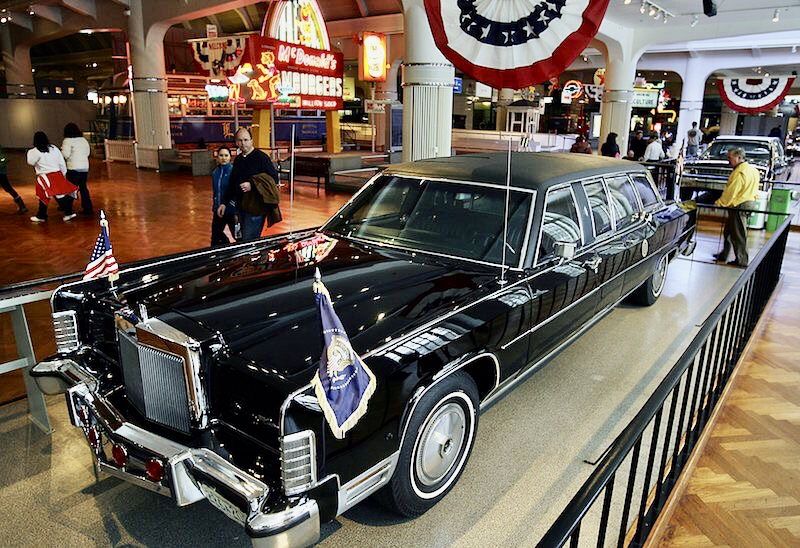
Context and Reflection
The 1972 Lincoln Continental’s design and use reflect a critical juncture in presidential transportation. The Kennedy assassination had already spurred significant changes, with earlier limousines like the 1961 Lincoln Continental (SS-100-X) retrofitted with armor after 1963. The 1972 model, however, was purpose-built for protection, a response to the increasing dangers faced by presidents, as evidenced by the assassination attempts on Ford and Reagan. Its robust construction and advanced features for the time highlight the Secret Service’s growing emphasis on proactive security measures.Interestingly, while the vehicle was a technological marvel, its sunroof panel harked back to an earlier era when presidents could engage directly with crowds, a practice that became increasingly rare after 1981. The limousine’s ability to withstand gunfire during Reagan’s assassination attempt validated its design, but it also marked one of the last times a president would use a vehicle with such a feature, as later models prioritized complete enclosure and even greater fortification.This Lincoln Continental is not just a vehicle but a symbol of a transitional period in American presidential history, where the balance between public accessibility and safety tipped decisively toward the latter. Its preservation at The Henry Ford Museum allows visitors to reflect on the challenges of protecting national leaders and the technological and cultural shifts that shaped modern presidential motorcades.

